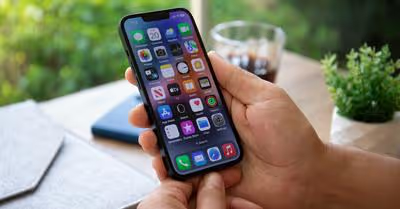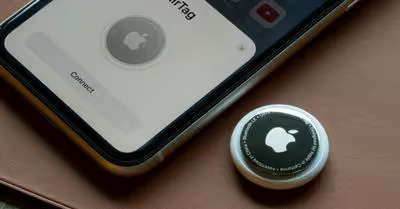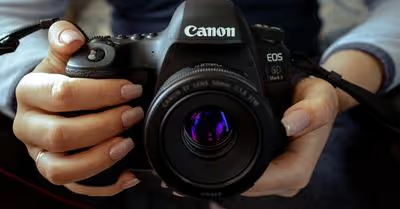Table of Contents
Why Does My iPhone Keep Dimming?
There are a few different reasons why your iPhone screen might be dimming itself.
Auto-Brightness Turned On
The most common reason for this issue is that your iPhone's "Auto-Brightness" feature is turned on. This feature adjusts the brightness of your screen based on the ambient light in your environment.
Low Battery Mode Turned On
Another possible reason for this issue is that Low Battery Mode is turned on. Low Battery Mode dims your screen and disables some features in order to conserve battery power.
True Tone Turned On
If you have an iPhone with a "True Tone" display, it's possible that this feature is turned on and causing your screen to dim. True Tone automatically adjusts the white balance of your screen based on the ambient light in your environment.
Night Shift Turned On
Night Shift is a feature that adjusts the color of your screen to a warmer hue in order to reduce eye strain. This feature can also cause your screen to dim itself.
Attention Aware Features Turned On
If you have an iPhone with Face ID, there are two "Attention Aware" features that can cause your screen to dim. The first is "Eye Contact." This feature dims your screen when it detects that you're not looking at it. The second is "Look Around." This feature dims your screen when it detects that your head is turned away from the phone.
iPhone Might Be Overheating
In some cases, the reason why your iPhone screen is dimming itself is that the phone is overheating. This can happen if you're using your phone a lot or if it's in a hot environment. If this is the case, you'll need to let your phone cool down before using it again.
Hardware Issues
In some rare cases, the issue might be caused by a hardware problem. If you've tried all of the tips mentioned below and your screen is still dimming itself, you should contact Apple Support for further assistance.
How To Fix The Issue?
Now that we've explained some of the reasons why your iPhone screen might be dimming itself, let's talk about how to fix the issue.
Restart Your iPhone
One of the most common issues facing iPhone users is their screen dimming. Though it can be frustrating, there is usually a quick and easy fix. One of the simplest and most effective ways to fix this issue is to restart your iPhone. This can be done by holding down the power button until the "slide to power off" message appears. Once your iPhone has turned off, simply turn it back on by holding down the power button again. In most cases, this will resolve any issues you're having. If not, there are a number of other options you can try.
Update Your iPhone
One of the most common issues people have with their iPhone is the screen dimming unexpectedly. While this can be caused by a variety of factors, such as a low battery or simple adjustments to the brightness setting, it's often due to a software problem. The good news is that updating to the latest version of iOS can often fix this issue. To do this, simply connect your iPhone to your computer and launch iTunes. Then, click on the "Update" button and follow the prompts. Once the update is complete, restart your iPhone and see if the problem has been resolved. If not, there are a few other troubleshooting steps you can try, but in most cases, updating to the latest version of iOS will fix the screen dimming issue.
Turn Off Auto-Brightness
If your iPhone screen is still dimming after restarting your phone and updating to the latest version of iOS, the next step is to check your "Auto-Brightness" setting. This can be found in your "Display & Brightness" settings. If this setting is turned on, it will automatically adjust your screen brightness based on the ambient light conditions. However, if it's turned off, you'll need to adjust your screen brightness manually. You may also want to check your display settings to make sure that your screen isn't set to turn off too quickly. If all of these settings are configured correctly, and your screen is still dimming, there may be a problem with your display. In this case, you may need to take your iPhone to an Apple Store or an authorized service provider for further diagnosis.
Turn Off Attention-Aware Features
As we mentioned earlier, if you have an iPhone with Face ID, there are two "Attention Aware" features that can cause your screen to dim. These features are designed to save battery life by reducing the brightness of your display when you're not looking at it. However, in some cases, they can be overly sensitive and cause your screen to dim even when you're looking at it. If this is the case, you can turn off these features by going to your "Settings" and selecting "Display & Brightness." Then, scroll down and toggle the "Eye Contact" and "Look Around" switches to the OFF position.
Restore Your iPhone As New
If you notice that your iPhone screen is dimming more than usual, it may be a sign that your phone needs to be restored. Restoring your phone can help fix several issues, including a dim screen. To restore your phone, you will need to connect it to iTunes and follow the prompts. If you are not sure how to restore your phone, you can find instructions online or contact Apple for support. Once your phone is restored, you should notice an improvement in the screen brightness. If the issue persists, it may be a sign of a more serious problem, and you should contact Apple for further assistance.
Increase iPhone Auto-Lock Timer
The "Auto-Lock" timer is a setting on your iPhone that determines how long the screen will stay active before it dims and locks. By default, this setting is set to two minutes, but you can change it to as little as thirty seconds or as much as five minutes. You can also choose to have the timer start over each time you unlock your phone. If you frequently find your screen dimming when you don't want it to, you may want to consider changing this setting. To do this, go to "Settings" and then "Display & Brightness." Scroll down to the "Auto-Lock" section and tap on the desired time interval. Remember, the longer you leave your screen on, the faster your battery will drain. So if you don't need your screen to stay lit for very long, it's best to keep the "Auto-Lock" timer set to a shorter interval.
Check For Hardware Issues
If you've tried all of the troubleshooting steps above and your screen is still dimming, there may be a hardware issue. In this case, you will need to take your iPhone to an Apple Store or authorized service provider for further diagnosis. They will be able to test your phone and determine if there is a problem with the display or another hardware component. If a hardware issue is found, they will be able to repair or replace the affected component.
Recent Articles

















